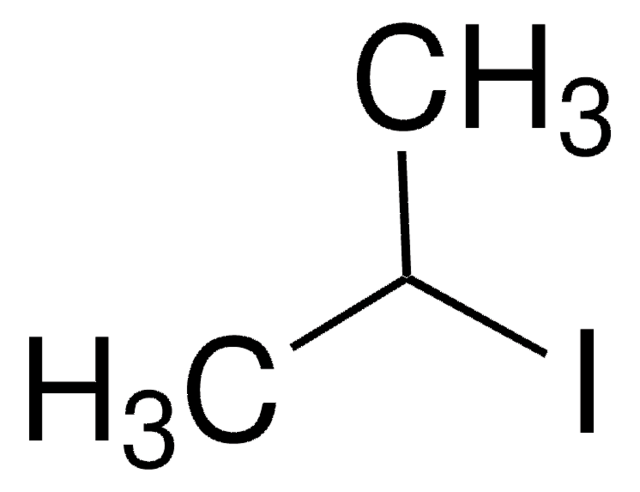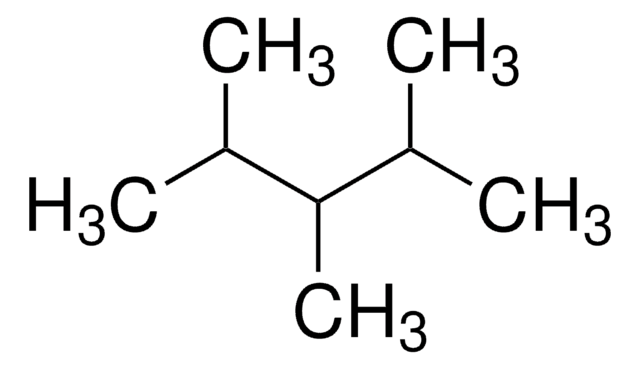360597
2,2,4-Triméthylpentane
ACS reagent, ≥99.0%
Synonyme(s) :
Isooctane
About This Item
Produits recommandés
Qualité
ACS reagent
Niveau de qualité
Densité de vapeur
3.9 (vs air)
Pression de vapeur
41 mmHg ( 21 °C)
Pureté
≥99.0%
Forme
liquid
Température d'inflammation spontanée
745 °F
Limite d'explosivité
6 %
Impuretés
≤0.0003 meq/g Water-soluble titr. acid
≤0.005% S compounds
Résidus d'évap.
≤0.001%
Couleur
APHA: ≤10
Indice de réfraction
n20/D 1.391 (lit.)
Point d'ébullition
98-99 °C (lit.)
Pf
−107 °C (lit.)
Solubilité
water: insoluble
Densité
0.692 g/mL at 25 °C (lit.)
Chaîne SMILES
CC(C)CC(C)(C)C
InChI
1S/C8H18/c1-7(2)6-8(3,4)5/h7H,6H2,1-5H3
Clé InChI
NHTMVDHEPJAVLT-UHFFFAOYSA-N
Vous recherchez des produits similaires ? Visite Guide de comparaison des produits
Description générale
Application
- Synthesis of polyethyleneimine /silica hybrid nanoparticles.
- Amino acid quantification process.
- To dissolve di(2-ethylhexyl) phosphoric acid(DEHPA) to form a solution that is used in the extraction and back extraction of methylene blue.
Mention d'avertissement
Danger
Mentions de danger
Conseils de prudence
Classification des risques
Aquatic Acute 1 - Aquatic Chronic 1 - Asp. Tox. 1 - Flam. Liq. 2 - Skin Irrit. 2 - STOT SE 3
Organes cibles
Central nervous system
Code de la classe de stockage
3 - Flammable liquids
Classe de danger pour l'eau (WGK)
WGK 2
Point d'éclair (°F)
10.4 °F - closed cup
Point d'éclair (°C)
-12 °C - closed cup
Certificats d'analyse (COA)
Recherchez un Certificats d'analyse (COA) en saisissant le numéro de lot du produit. Les numéros de lot figurent sur l'étiquette du produit après les mots "Lot" ou "Batch".
Déjà en possession de ce produit ?
Retrouvez la documentation relative aux produits que vous avez récemment achetés dans la Bibliothèque de documents.
Notre équipe de scientifiques dispose d'une expérience dans tous les secteurs de la recherche, notamment en sciences de la vie, science des matériaux, synthèse chimique, chromatographie, analyse et dans de nombreux autres domaines..
Contacter notre Service technique










